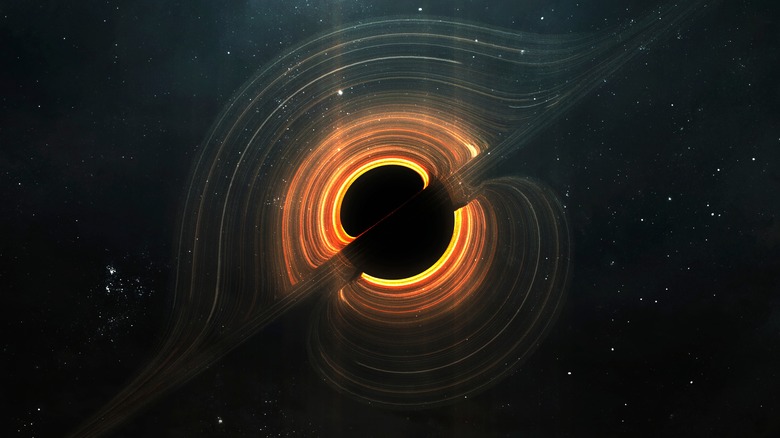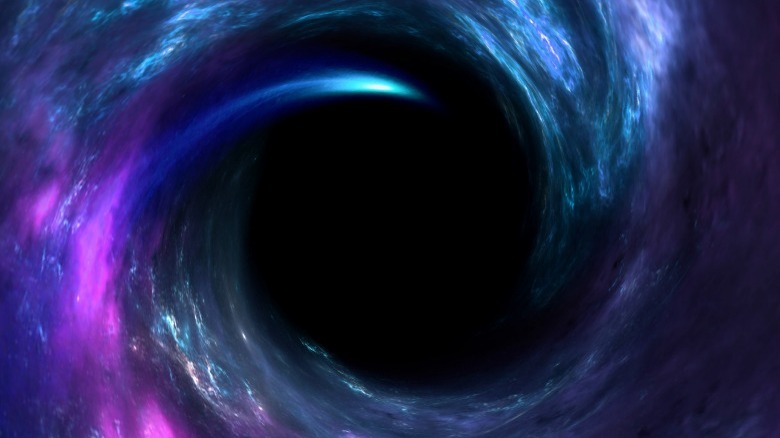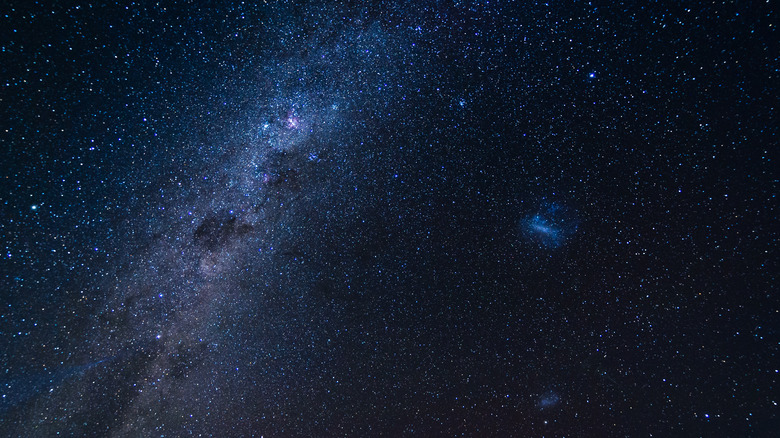The Mind Blowing Amount Of Black Holes In The Universe
Out in the depths of space there lurk hidden monsters — black holes — which are the densest objects in the universe. They can be hard to spot because they absorb everything which comes too close to them, including light. So we aren't really sure how many of them actually exist in the universe — but researchers recently came up with an estimate.
In a paper published in The Astrophysical Journal, a group of researchers from Italy and the UK used a simulation called SEVN, or Stellar EVolution N-body code, to estimate the amount of mass in galaxies made up of stars. By using data about the rate of star formation and the composition of the space between galaxies, called the interstellar medium, the group calculated how much of the mass of galaxies could be explained by these factors. From this, they could work out how much mass is "hidden" in black holes.
The number is massive
The research suggests that black holes could be responsible for a large chunk of the mass of galaxies, with around 1% of the mass of ordinary matter being found in black holes. That would mean the universe would host an enormous number of black holes — around 40 billion billions, or 40 followed by 18 zeroes in total.
Getting to this estimate took a variety of experts in different fields working together, as one of the researchers, Andrea Lapi of the Scuola Internazionale Superiore di Studi Avanzati (SISSA) or International School for Advanced Studies, explained: "This research is really multidisciplinary, covering aspects of, and requiring expertise in stellar astrophysics, galaxy formation and evolution, gravitational wave and multi-messenger astrophysics; as such it needs collaborative efforts from various members of the SISSA Astrophysics and Cosmology group, and a strong networking with external collaborators."
It may be that black holes make up a significant chunk of the mass of the universe, along with stars, and the dust and gas that is common both within galaxies and between them in the interstellar medium. But you might have noticed that this result showed that black holes could make up 1% of ordinary matter.
That's because ordinary matter, or what physicists call baryonic matter, is itself just a small part of the total mass of the universe. Everything we see around us — every object, every particle — makes up less than 5% of the total of everything that exists in the universe. The rest of the mass is made up of dark matter and dark energy.
What makes up most of the universe
The tricky thing is, that we can't directly observe dark matter or dark energy. We know that they must exist because we can see their effects, but no one has ever succeeded in directly detecting them. So they are theoretical constructs, but ones most cosmologists are pretty sure must exist.
Dark matter is the name for a theoretical particle that makes up around 27% of the universe. When you look at very large objects like galaxies, the way that they move suggests they have a lot more gravity, and therefore a lot more mass, than is visible to us. This unseen mass is called dark matter.
Dark energy is a theoretical form of energy that we think must exist due to the way the universe expands. Scientists have known that the universe is expanding for decades, but measurements using the Hubble Space Telescope in the 1990s showed it was expanding faster than expected. The extra energy pushing this expansion is called dark energy, and it makes up an incredible 68% of the total universe.


